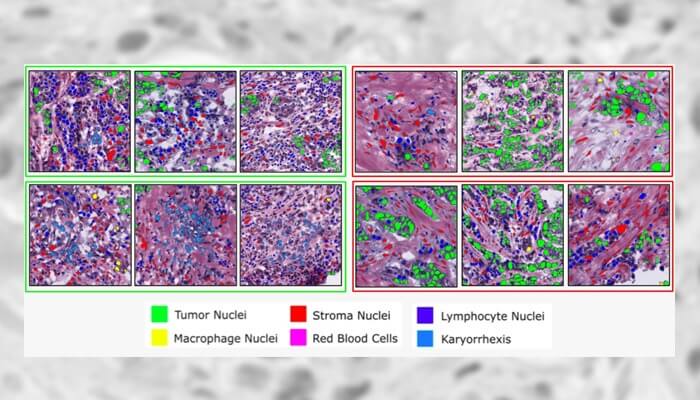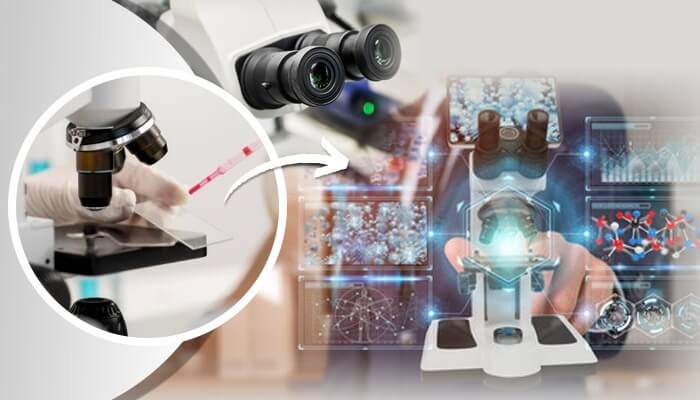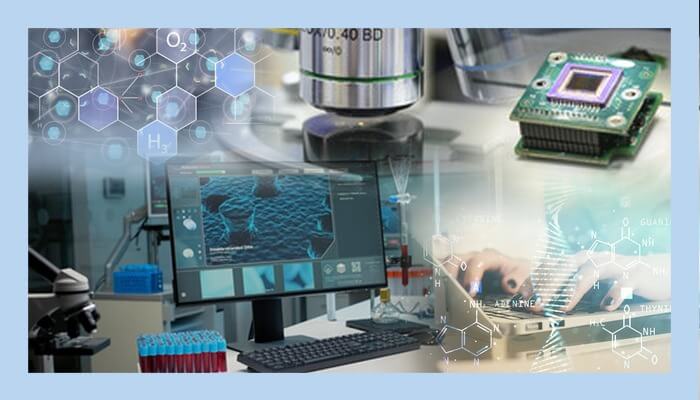With the installation of a digital scanner at Nizam’s Institute of Medical Sciences (NIMS) to convert traditional histopathological slides into computerized images, IIIT Hyderabad takes the first step towards the creation of an Indian Pathology Dataset.
A glass slide, a microscope and a trained eye. These typically make for a traditional pathology process. Here, the affected bodily tissue or sample is microscopically examined by a pathologist to pronounce a diagnosis. With Artificial Intelligence making inroads into healthcare, pathology is not far behind. If ever there was a case for digitization in this field, it was most certainly precipitated during the pandemic. From allowing pathologists the safety and convenience of remotely analysing tissue samples to seamlessly collaborating with peers or doctors located in different geographical locations, digital pathology is definitely the future. While globally there has been an interest and increased adoption of computerised imagery in diagnostics, the first Indian efforts in this direction are being enabled by IIIT Hyderabad in collaboration with NIMS Hyderabad.
IIITH’s Cancer Initiative
IHub-Data (https://ihub-data.iiit.ac.in) at IIITH is a Technology Innovation Hub that has been established under the National Mission on Interdisciplinary Cyber Physical Systems (NM-ICPS) in the area of data driven technologies. The Hub is focused on putting together large-scale datasets to help develop solutions through applied research. Currently efforts are being directed and amplified in the domains of healthcare and smart mobility. One of the first initiatives In the healthcare domain is currently centred around image diagnosis of cancer. Dr. Vinod P.K, who is leading the Cancer initiative at iHub-Data, cites a WHO report (that states 1 in 10 Indians will develop cancer during their lifetime) to explain the centre’s primary focus on clinical and image-based diagnosis of common types and stages of cancer. Early detection and management are extremely crucial for cancer care. But unfortunately, as per a Niti Aayog policy report on the National Strategy for Artificial Intelligence, for an annual incidence of more than 1 million new cancer diagnosis every year, India has barely 2000 pathologists experienced in Oncology and less than 500 of them who could be considered experienced oncopathologists. This is where a machine learning solution can help by assisting a pathologist in making quality diagnosis as well as in quickening the time-consuming manual process. But in order to create an automated tool, an essential prerequisite is the availability of annotated pathology datasets which currently don’t exist in the Indian context. According to Prof. Deva Priyakumar, the Academic Head of IHub-Data, “The Indian Pathology Dataset is one such effort where a large scale data collection of histopathology images specifically from Indian patients will be used to develop AI solutions for accelerated and accurate diagnosis of different types of cancer.”

Histopathological Process
In traditional histopathology or a biopsy, a tissue sample is routinely processed to make sections out of it. These sections are then stained with pigments onto a glass slide to provide a contrast and reveal cellular components under microscopic observation. “All of this is a manual and tedious process where a pathologist has to count and see various expressions in morphometry, explains Dr. Shantveer Uppin, Head of Department, Pathology at NIMS, adding, “With digitization, the entire slide is scanned and converted into a digital one which can be viewed on a computer and magnified (if required) to look at the finer details.” IIITH’s initial collaborative efforts with NIMS are focused on digitizing the existing glass slides to create an Indian dataset of various malignancies. “As a top-rung institute, NIMS attracts a wide variety of patients and consequently has a huge quantity of pathological slides that have been stored for over 15 years,” says Dr. Uppin. With cancer being one of the core areas of iHub’s research, the plan is to first create a dataset of histopathological slides. “Within cancer too, we are targeting the top 5 common cancers in India, of which lung cancer is one, “ says Prof. Bapi Raju, the healthcare lead at iHub-Data. Since NIMS receives a large caseload of lung cancer patients, the project will kickoff with digitizing and annotating of lung cancer biopsies. Apart from cancer, the aim is to digitize lupus nephritis samples – an auto-immune condition affecting the kidneys. “There are various classes of lupus which are analysed manually. We want to build an AI tool where based on the scanned images, it will identify these features and help us in guiding diagnosis better,” says Dr. Uppin.
The Future Is Digital
Speaking about the gains to be made by the medical fraternity with digital pathology, Dr. Uppin highlights the enablement of distant reporting or telepathology. “One need not physically transport the glass slides to a pathologist for diagnosis. A mere link to the required image will be enough. This will not only make diagnostics more accessible to all – even those in remote areas, but it will be easier to get a second opinion too,” he says. The development and refinement of AI tools will in turn help in diagnostic concordance especially with the current manual process relying heavily on subjective interpretation. Another significant paradigm shift will be witnessed in the archival and retrieval process of the histopathological slides. “While some medical institutions store the glass slides for 5 years for future reference, at NIMS, we archive them for 15 years and more. This requires a lot of space and infrastructure. Plus with physical storage, the quality of staining deteriorates and slides get affected; sometimes the glass slides break and so on. With digital archiving, the images can be barcoded and easily accessible,” says Dr. Uppin.

Pathology Education
Terming digital pathology as a “dynamic generational shift”, Dr. Uppin talks of how it is set to upend training and education. “Bigger centres like us (NIMS) have access to so many diagnostic tests. We receive so many new referral cases that are not typically seen in a peripheral medical college. Those students do not have access to the same learning resources because glass slides cannot be transported everywhere and taught. Instead, if they can just be given a link to the same, distant learning becomes a very easy tool for teaching upcoming pathologists there’.
Baby Steps To Biobank
While the collaboration with NIMS marks the initial step towards building a data repository, the team at iHub-Data is exploring a long-term and expansive effort involving a consortium of hospitals and diagnostic centres. “Cancer has a lot of diversity and we need a lot of samples. It’s not enough that we engage with one hospital. We are looking at other institutions too that can contribute to this effort – both retrospective and prospective – and participate actively in annotating histopathological samples,” says Prof. Bapi. Likening this effort to the building of a Biobank of sorts, Dr. Vinod says that a wide variety of image samples could lead to a repository of datasets for all diseases. “In other countries like the UK, there exists a system of collection of all datasets collated by many institutes that can be shared for academic and research purposes. We hope to create a similar repository that can contribute towards any such Indian-effort that may come about in the future.” Towards this, acknowledging that installing expensive scanning machines in every hospital may not be feasible, the iHub-Data team is in preliminary discussions to have a centralised scanning facility housed at IIITH, serving as a one-stop shop for sample collection and digitization. “Our aim is to create this repository such that not only can everyone contribute to it but it is also publicly accessible. It is a long haul, but we are definitely excited about it,” signs off Prof. Bapi.



Next post